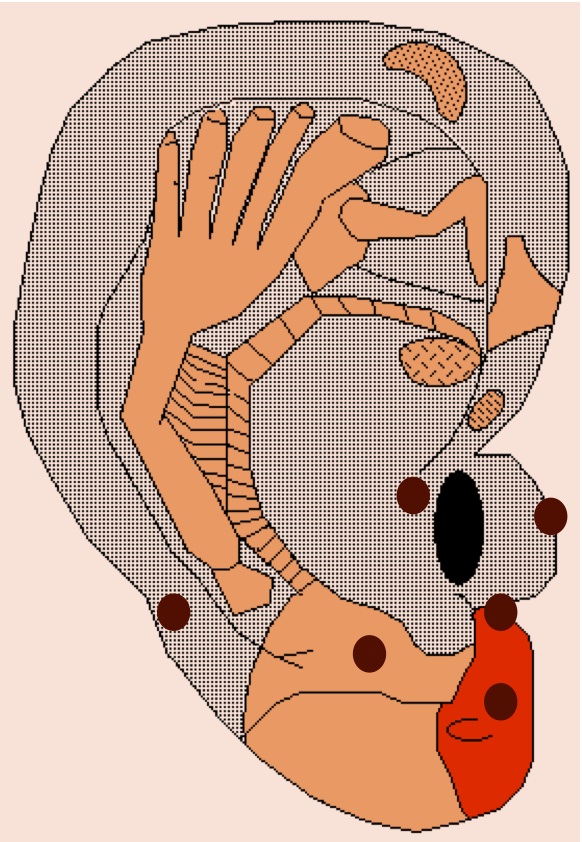Why so many points?
Why so many points?
Each author has listed points according to his/her own criteria.
The Chinese explain that they are the result of their clinical experience.
Paul Nogier used tissue extracts and the Vascular Autonomic Signal (VAS).
Frank Bahr used extracts of homeopathic dilutions and the VAS
David Alimi explains them by neurophysiology
Bernard Julienne and Alain Mallard used the VAS with different techniques.
Each technique and each method gives different points.
The locations of the points
They vary according to the anatomy of the ear and each individual’s assessment. They are therefore approximate, hence the notion of needing to search for the point in a zone.
The location of the point can vary depending on the particular pathology and the combined effect of all the patient’s various medical problems.
The therapeutic point is different from the organ point, hence the three phases and the function points.
How to make head or tail of it all?
The names of the points vary according to the authors and their countries.
Some differences seem to derive from errors in transcription.
We are therefore in the Tower of Babel syndrome, fostered by language differences, isolation, or the intolerance of certain schools which makes the exchange of information very difficult.
The present reference is still the consensus on the anatomical zones established at the WHO meeting in 1990. It is a shame that some people have used it with a different numbering system, which has lead to confusion.
Faced with such diversification, it seems to me that the only solution is to name the positions of the zones the points are in, regardless of any interpretation that might be made.
There have been several attempts to do so, but no team work. Yet there is no reason why agreement should not be reached on the subject.
In practice
Auriculotherapy has demonstrated its effectiveness, regardless of the confusion reigning about what to call the points.
Its effectiveness is made possible by the fact that, in the ear, the points are only active in the presence of pathology or some kind of functional imbalance. The practitioner’s entire skill resides in his ability to find the active points, regardless of whether he finds them by using the ACR (Auriculo-cardiac reflex: RAC in French, short for réflexe auriculo-cardiaque) or VAS (Vascular autonomic signal), electrical measurements or just by searching for painful points.
In fact, the names of the points are of little importance. They are simply a way of directing the research.
The Master points should be given the most consideration. They exist in nearly all the protocols. These points have the ability to regulate transfers and suppress oscillations. They are therefore able to improve the patient’s reactivity and his capacity to adapt and they are largely responsible for the efficiency of auriculotherapy.
 Points d’auriculothérapie / Auriculotherapy Points
Cartographie synthétique et évolutive
Points d’auriculothérapie / Auriculotherapy Points
Cartographie synthétique et évolutive
